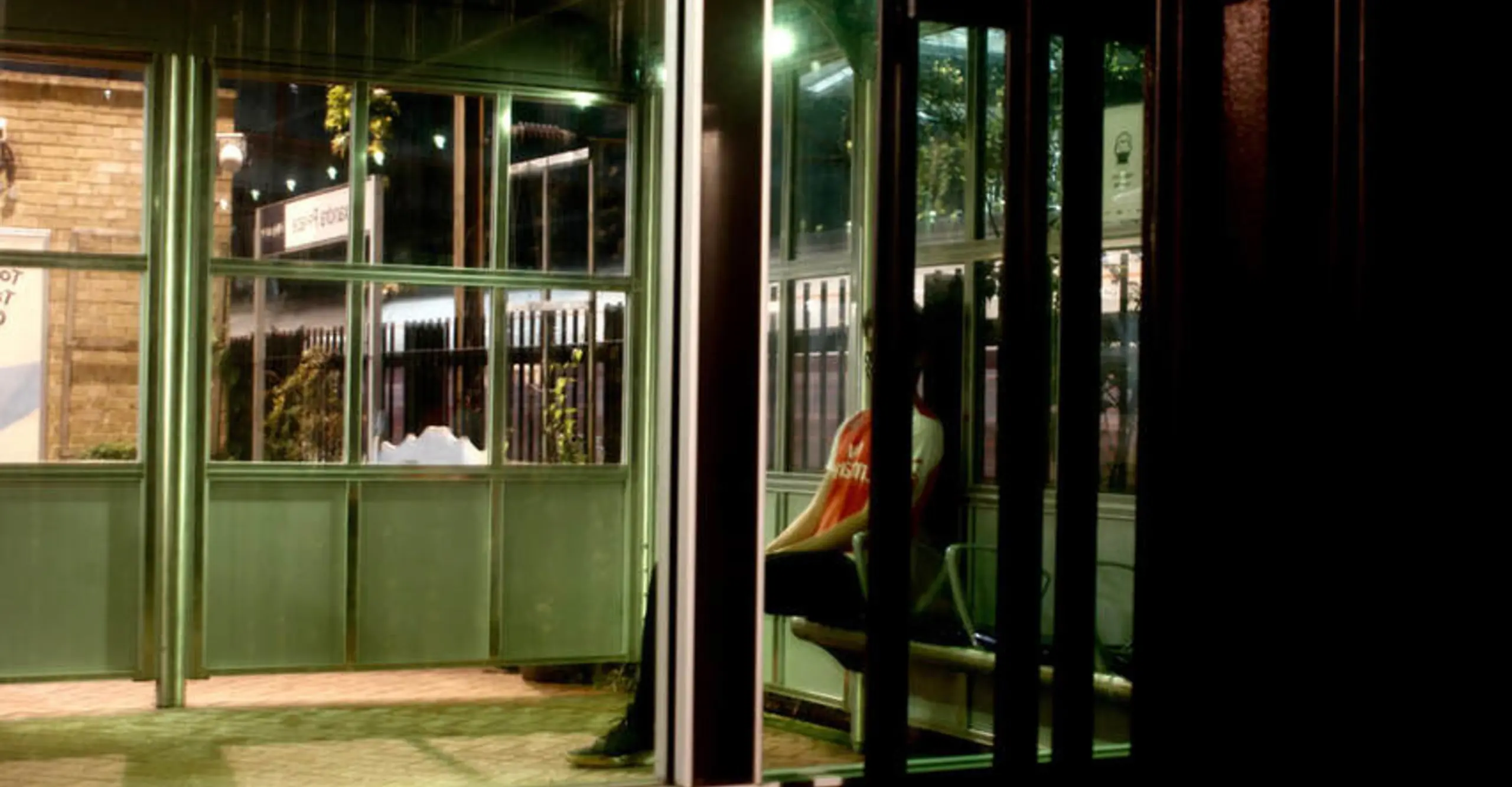This photo is part of a nonlinear sequence inspired by the work of Wing Shya, a Hong Kong photographer who became known through his onset stills of the films of director Wong Kar Wai. He began by taking shots in between takes during the film Happy Together, and then from this he was allowed to continue working with Wong Kar Wai by creating images behind the scenes and during takes on the movie In The Mood For Love. His oeuvre is influenced by the environment of Hong Kong, due to the neon covered landscapes which are reflected in the vibrancy of his photos.
The image was taken on the platform of Alexandra Palace station in London when the sun had completely set. I deliberately chose to shoot at this time due to contrasts being more defined between sources of light and areas of darkness. The subject is wearing a deep red colored t-shirt as this would stand out in the dark, manipulating the viewer’s gaze directly to him. There was nobody else on the platform at that time which further emphasizes the subject’s isolation, both from the viewer with the physical barrier of the wall and from other elements outside the image due to the barrier which the rectangular frame provides. The model was actually freezing only wearing a t-shirt in cold weather; if their face were visible then the viewer would able to see some discomfort providing context in the process.
The skills I developed from creating this photo were using a tripod and shooting in the dark. On the one hand, the tripod removed camera shake allowing for longer exposures, though, on the other hand, this restricted my movement. However, this limitation of motion forced me to slow down my process and really think about how I composed each and every shot. In terms of shooting in the dark, this can be technically challenging, as you must manage ISO, shutter speed and aperture at the same time.
What interests me about the photo is that the subject is obscured by the iron bars which divide parts of their body up only allowing brief glimpses. I purposely hid his face as I knew this tends to be what the viewer looks for in order to gain some type of context for the image, giving themselves a sense of grounding within the frame. In removing the context, the viewer is forced to search the photo for longer, allowing for different interpretations of the narrative depending on how they connect the elements inside the picture together. I also like the sense of intimacy formed between the subject and the viewer who is on the outside looking in, possibly a character within the narrative whose eyes the viewer is looking through, unable to interact with the subject only to watch as a bystander. Another aspect which works well are the shadows that form on the ground following the same horizontal lines as the walls surrounding the subject, pushing them further into one corner.
- Yazid Rowe-Habbari
